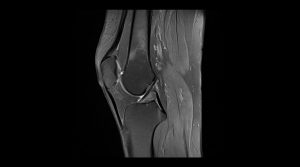The recent research on medical proton imaging is by and large motivated by the desire to gather information using a less invasive source such as X-rays. With the use of a proton microscope, it is possible to image biological tissue without leaving any radiating material behind in the tissues of the patient.
Proton beam therapy uses very high beams of protons to target tumors. Like x-rays, medical proton imaging can penetrate tissue to reach deep-seated tumors. Though more expensive to deliver than conventional x-ray therapy, it is beneficial to reaching tumors more difficult to reach by conventional means, causing less damage to healthy tissue. Especially if the tumor is located on the brain, central nervous system, near critical organs or most cancers in children. By causing less radiation to be absorbed by healthy tissue and leaving healthy tissue behind, proton beam therapy greatly reduces the risk and side effects of radiation therapy.
One of the most complex medical imaging systems ever developed which uses proton beams to create 3D images of the internal anatomy of cancer patients will be used in one of the UK’s two new NHS high energy proton beam therapy centers. Using medical proton imaging will help provide better treatment planning and monitoring for cancers that are difficult to treat.
This project, known as the OPTima project, is led by Professor Nigel Allinson MBE, from the University of Lincoln, UK. He said, “Using the same type of radiation for treatment and imaging eliminates most of the uncertainties currently associated with treatment planning. Treatments are always planned to be robust and safe, but these uncertainties means that sometimes the treatments are not optimum – now we will have the opportunity for them to be robust and optimum.”
“Furthermore, having proton imaging in the treatment room, we can monitor changes in a patient’s anatomy throughout the course of treatment, achieving adaptive radiotherapy.”
This new and innovative method of imaging and treating cancers will eliminate some of the uncertainties associated with traditional x-ray therapy. It is also believed that some of the more difficult tumors will become treatable, and most patients will see more positive outcomes following treatment.
Professor Allinson added, “This will be the first time anywhere that a proton imaging system will be installed in an operational proton therapy centre. It offers an amazing opportunity to work with oncologists and medical scientists to understand what they need to improve treatments and benefit patients.”
In the U.S., researchers are developing a system for proton CT and radiography, which could be used both for image guidance and estimation of proton beam range in a clinical setting. Currently, proton therapy is planned using X-ray-based CT. The CT data are also used to create digitally reconstructed radiographs (DRRs) for use in daily patient set-up, by comparing the DRRs to X-ray images recorded immediately prior to treatment.
This approach, however, introduces inherent inaccuracies due to the need to convert CT Hounsfield units into proton relative stopping power. The research team from Loyola University, Proton VDA, the Chicago Proton Center and Northern University, instead propose the use of proton CT for treatment planning. Proton CT measures proton stopping power directly, significantly reducing beam range uncertainties during planning.
In analogy to the creation of DRRs, the proton CT data can also be used to generate proton DRRs. These pDRRs could someday replace X-rays for high-precision patient alignment in the daily image-guidance process, as well as providing proton range information. Notably, the estimated radiation dose to the patient is only around 1% of the absorbed dose delivered by the X-ray-based approach.
Ensuring that the medical proton imaging system you are developing directs beams accurately is where we come in. At Universe Optics we sell a wide range of medical imaging lenses suitable to use in the medical field. We also custom create a precision lens to meet your exact specifications.
With the rise of medical innovations, the increase of devices that will require high powered lenses is sure to increase as well. We are here to meet those solutions.